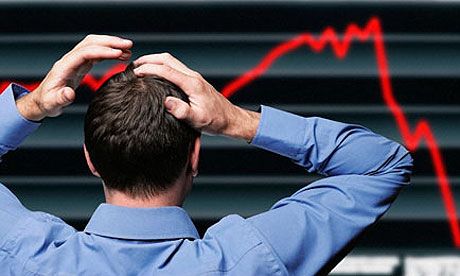Hardly surprising. Much of the “gains” in the Philippine economy scored by the administration’s media lackeys and spin doctors mainly on the basis of a prolonged bullish run by the share market is turning out to be no more than smoke-and-mirrors. A surging sharemarket in essence says nothing about the underlying substance of a national economy and, as the Wall Street Journal now reports, it was really all just an outcome of market perception propped up by mere promises.
The Philippines PSEi composite had surged 27.4% to this year’s high on May 15 driven by upgrades by rating companies and the government’s drive to boost economist [sic] growth. That made it the second-best performing Asian market after Japan, and easily beating neighbors Indonesia and Thailand that had also done well.
But in a sharp reversal, the Philippines market has now dropped 19.7% from its high amid the rout in global equities within the past few weeks. The trigger has been signs the Federal Reserve may cut back on its bond buying program that had flushed the world economy with excess cash. That’s prompted global investors to withdraw money from emerging markets and send it back to the U.S., where the economy is starting to show signs of growth.

According to COL Financial researcher April Lee-Tan, all of the gains were “driven by overseas developments” reflecting the Philippines’ reliance on all things foreign to inflate its fortunes (or perception of it as this case makes evident). As the rug is pulled from underneath, the Philippines is now left with its glaringly overvalued equity…
| SUPPORT INDEPENDENT SOCIAL COMMENTARY! Subscribe to our Substack community GRP Insider to receive by email our in-depth free weekly newsletter. Subscribe to our Substack newsletter, GRP Insider! Learn more |
“From a short-term perspective, we’re really expensive and nobody denies that. The market was pricey and foreign investors now have another market to look at as the U.S. economy is improving,” [Lee-Tan] added.
This was echoed by Justino Calaycay, an analyst of Accord Capital Equities Corporation who reported in a statement to the Star that…
“Admittedly, it would not be easy for the general investing public to be convinced to buy the bargained stocks (given the recent performance of the local equities),” Calaycay said.
This, he said, suggests a “wider disconnect” between investors’ perceptions – as reflected in the prices- and the fundamentals of the local economy.
Indeed, much of what makes the Philippines “interesting” is all drummed up — from its “More Fun in the Philippines” tourism campaign that masks poor infrastructure and transport and an appalling security and safety record, to the gleaming cityscape that glosses over horrendous traffic jams and squalid slums, and, now, a share market that belies any semblance of something within the country’s domestic capacity to produce tangible value that matches the numbers trumpeted.
As it turns out cash inflow that had buoyed the share market, as with most equities markets, were investments on mere promises. The trouble with the Philippines is that it has long ago proven that it is really in essence nothing more than one big broken promise. From promise exhibited as the posterchild of democracy in 1946 to the promise of prosperity on the back of new-found “freedom” in 1986, all through to the promise of a walk down the straight-and-narrow path in 2010, none of these promises have been fulfilled.
- This latest Filipino-style ‘anti-corruption’ circus proves that the Philippines needs a serious reboot - November 16, 2025
- Filipinos literal sitting ducks as wind and floods from natural tropical typhoons amplified by years of neglect bear down - November 9, 2025
- Rally NA NAMAN??? - September 20, 2025
A cynic might even speculate that the Philippines government had done that deliberately… manipulating a short-term illusory success for the duration of the election season, not caring that the “smoke-and-mirrors” was likely to cause long-term economical damage and loss to the national economy afterwards…
The increases were due to ” economic strategy and good governance”, the declines are now due to “external factors”! So much for philippines economic policy. Not a clue.
The ignorance and arrogance of malacanan incompetents are only matched by their stupidity and duplicity, and the ability to make the uneducated masses believe anything without question.
An economy built on propaganda, but without strategy or substance is but a kite in the wind, and it may fool the locals, but the international community/investors have never been impressed, hence the abysmal FDI figures. The worst is yet to come.
The SONA will be peppered with ‘inclusive growth’ as the new mantra, again without an understanding of basics or fundamentals of macroeconomics, and naturally no specifics/plan.
Everything is about buying time and raiding the coffers for as long as possible.
Clearly a population of such subservience need to reach rock bottom before they even start asking basic questions of their government, and people wonder why filipinas are ‘the f#ck bunnies of asia’, and the men as ‘mummy’s boys’. Abuse and masochism is in the dna.
exaggerations are typical of governments (politicians) and the kind of economic system (when those who holds the capital reigns supreme) a country has by the way…
however, hope you don’t downplay too much the plus points in the Philippine economy, no matter how meager it can be…